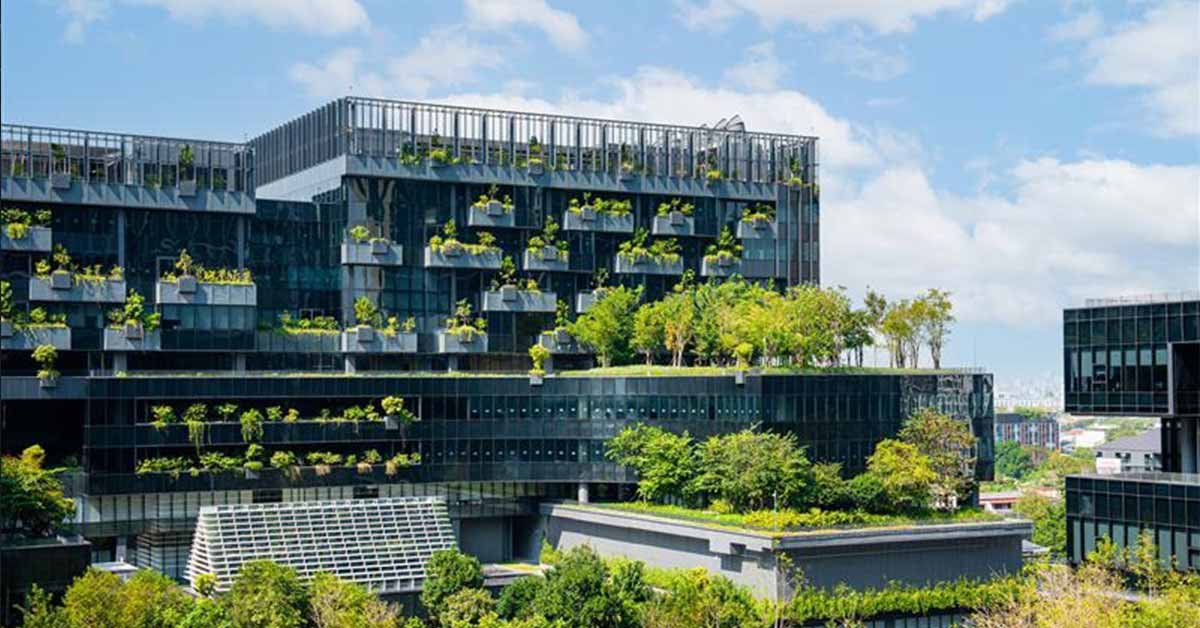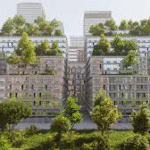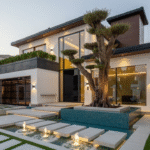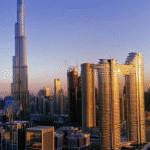Now Reading: Green Building Initiatives in the UAE: Transforming Real Estate Development
-
01
Green Building Initiatives in the UAE: Transforming Real Estate Development
Green Building Initiatives in the UAE: Transforming Real Estate Development

Table of Contents
The United Arab Emirates (UAE) is at the forefront of sustainable real estate development, with green building initiatives reshaping its property landscape in 2025. Driven by ambitious national strategies like UAE Vision 2021, UAE Energy Strategy 2050, and Dubai 2040 Urban Master Plan, these initiatives align with global sustainability goals, including net-zero emissions by 2050.
In Fujairah, Ras Al Khaimah (RAK), and Umm Al Quwain (UAQ), green building practices are gaining traction, integrating eco-friendly materials, energy-efficient designs, and smart technologies into coastal and luxury developments. This response explores key green building initiatives across the UAE, their impact on real estate in Fujairah, RAK, and UAQ, and actionable insights for investors, incorporating a comparison with Sharjah’s Sustainable City and addressing the transformative trends in 2025.
Key Green Building Initiatives in the UAE (2025)
- Estidama Pearl Rating System (Abu Dhabi):
- Overview: Launched in 2010 by the Abu Dhabi Urban Planning Council, Estidama mandates a minimum Pearl 1 rating for all new buildings and Pearl 2 for government buildings, focusing on environmental, economic, social, and cultural sustainability, per emiratesgbc.org.
- Features: Assesses energy efficiency, water conservation, and material use. Applied in projects like Masdar City, set for completion in 2025, with LEED Platinum-certified buildings like Siemens’ headquarters, per aoshearman.com.
- Impact: Encourages developers to adopt solar panels, greywater recycling, and low-carbon materials, reducing operational costs by 20–30%, per ecomena.org.
- Al Sa’fat Rating System (Dubai):
- Overview: Introduced in 2016 by Dubai Municipality, Al Sa’fat mandates a Silver Sa’fa rating for new buildings, with optional Gold or Platinum tiers, per emiratesgbc.org. Mandatory since 2014 for government buildings and 2016 for all new constructions, per orfonline (X post).
- Features: Emphasizes energy efficiency, water management, and green materials across four categories: ecology, building vitality, materials, and waste management, per allenovery.com.
- Impact: Supports Dubai’s Sustainable City, a net-zero community with solar-powered homes and 6–8% higher rental yields for LEED-certified buildings, per 100keys.ae.
- Barjeel Green Building Regulations (Ras Al Khaimah):
- Overview: Launched in 2024, Barjeel sets mandatory standards for energy, water, materials, and comfort in RAK’s new buildings, with a voluntary pilot phase in 2025, per emiratesgbc.org.
- Features: Targets simple (e.g., villas) and complex (e.g., >1,000 sqm) buildings, promoting renewable energy and thermal insulation, per emiratesgbc.org.
- Impact: Enhances projects like Mina Al Arab, reducing energy consumption by 15–20%, per blog.psinv.net.
- UAE Energy Strategy 2050:
- Overview: Updated in 2024, this strategy targets 30% clean energy by 2030, 42–45% energy efficiency improvements, and net-zero emissions by 2050, per emiratesgbc.org.
- Features: Promotes solar power (19.8 GW capacity by 2030), hydrogen production, and retrofitting programs like Etihad ESCO in Dubai, per ecomena.org.
- Impact: Drives AED 100 billion in savings and 50,000 green jobs, influencing real estate with incentives like the Dubai Green Building Incentive Program, per swankdevelopment.com.
- Emirates Green Building Council (EmiratesGBC):
- Overview: Established in 2006, EmiratesGBC promotes green building practices through events, training (e.g., PA-CEMP), and collaborations like the MoU with Expo City Dubai, per emiratesgbc.org.
- Features: Recognizes sustainable developers (e.g., Innovo as Sustainable Contractor of the Year 2025) and supports LEED and BREEAM certifications, per emiratesgbc.org.
- Impact: Facilitates dialogue between public and private sectors, boosting projects like Emaar Properties’ sustainable developments, per properties.emaar.com.
Green Building in Fujairah’s Coastal Developments

Fujairah’s real estate market, with a 30% demand surge in 2024, integrates green initiatives to enhance its coastal projects, aligning with the Fujairah 2040 Plan’s sustainability goals, per gulfnews.com.
- Fujairah Beachfront Residences (Eagle Hills):
- Green Features: Solar panels, water-saving systems, and recycled materials reduce energy use by 20%, per eaglehills.com. The project aligns with Estidama guidelines, targeting LEED certification, per topluxuryproperty.com.
- Impact: 6–8% rental yields, 15–20% appreciation by 2027, and lower utility costs attract eco-conscious investors, per gulfnews.com.
- Investor Insight: Explore off-plan units via eaglehills.com for early-bird pricing, ensuring compliance with Fujairah Real Estate Department, per valorisimo.com.
- Sheikh Mohammed bin Zayed City:
- Green Features: Energy-efficient designs, greywater recycling, and green spaces meet Estidama Pearl 1 standards, per khaleejtimes.com.
- Impact: 5–7% yields and 10% price growth by 2026, driven by sustainable community planning, per khaleejtimes.com.
- Investor Insight: Target villas via bayut.com, leveraging Fujairah’s housing shortage and eco-friendly appeal, per thenational.ae.
- Sustainability Driver: Fujairah’s Smart Logistics City and port expansion (1 million TEUs) encourage green construction, with developers adopting modular techniques to cut waste by 15%, per adports.ae.
Green Building in Ras Al Khaimah’s Real Estate Boom

RAK’s 118% transaction growth (AED 15.08 billion in 2024) is bolstered by Barjeel regulations, enhancing its luxury waterfront projects, per traveldailynews.com.
- Al Marjan Island (Manta Bay, The Astera):
- Green Features: Solar-powered systems, thermal insulation, and water-efficient fixtures comply with Barjeel’s energy and water standards, per majordevelopers.com. Manta Bay targets LEED Silver, per darglobal.co
Conclusion

The UAE’s green building initiatives, from Estidama and Al Sa’fat to Barjeel and EmiratesGBC, are transforming real estate in 2025, with Fujairah, RAK, and UAQ leading in affordable, sustainable luxury. Projects like Fujairah Beachfront, Al Marjan Island, and Sobha Siniya Island offer 6–12% yields and 15–98% growth potential, outpacing Sharjah Sustainable City’s 5.06% ROI with coastal appeal and lower entry points. Investors should target off-plan green properties via bayut.com, ensure compliance with local Real Estate Departments, and meet EmaraTax deadlines by March 31, 2025, to capitalize on the UAE’s sustainable real estate revolution
read more: Fujairah’s 5 Coastal Developments: Investing in the UAE’s Eastern Seaboard
watch more






















